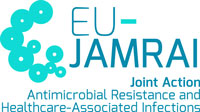Step by step guide for the implementation and assessment of MOOC
A Massive Open Online Course (MOOC) is an online educational course designed for large-scale global participation, typically offered free of charge or at a low cost, and accessible via the web through dedicated platforms. In the context of AMR/AMS, MOOCs aim to provide widely accessible, flexible learning opportunities to diverse audiences—including healthcare professionals, students, researchers, policymakers, and the general public—on various aspects of antimicrobial resistance, its drivers, consequences, and strategies for stewardship and control.
Table of contents

Planning a MOOC
The following steps should be taken into consideration when planning a MOOC on AMR/AMS:
- Define Learning Objectives and Target Audience: Clearly articulate the learning outcomes for the MOOC and identify the primary and secondary target audiences. MOOCs can cater to broad audiences or be tailored to specific professional groups interested in AMR/AMS. (Sneddon et al., 2018, targeted healthcare professionals globally; Pérez-Moreno et al., 2018, aimed at various healthcare professionals in Spain; Duarte et al., 2020, targeted professionals in public health, food safety, and clinical microbiology for a metagenomics MOOC).
- Curriculum Design and Content Development: Develop a comprehensive, evidence-based curriculum structured into logical modules (typically weekly). Employ diverse and engaging multimedia content, including short video lectures by experts, interviews, animations, infographics, case studies, downloadable readings (articles, guidelines), and links to external resources. (Sneddon et al., 2018; Duarte et al., 2020, and Pérez-Moreno et al., 2018, all detail modular structures with varied content types. Schettino and Capone, 2022, discuss engaging learning design strategies for physician MOOCs).
- Platform Selection and Course Setup: Choose a suitable MOOC platform (e.g., FutureLearn, Coursera, edX, or national/institutional platforms) based on features, reach, and technical requirements. Build and configure the course within the selected platform.
- Assessment Strategy Development: Incorporate formative assessments (e.g., end-of-module quizzes with automated feedback) to reinforce learning and allow participants to check their understanding. Summative assessments (e.g., final exams, projects, peer-reviewed assignments) can be included, often linked to obtaining a certificate of completion or achievement. (Sneddon et al., 2018, used weekly quizzes and a statement of participation; Pérez-Moreno et al., 2018, used self-assessment tests and a final exam; Schettino and Capone, 2022, mention peer assessment).
- Promotion and Enrollment Management: Develop a strategy to promote the MOOC widely to reach its intended large and diverse audience. Manage the open enrollment process. (Salm et al., 2020, highlight the potential of MOOCs to reach a large audience of GPs).
- Facilitating Learner Support and Interaction: Integrate discussion forums as a key component for Peer-to-peer Learning, sharing diverse global perspectives, and interaction with course facilitators or teaching assistants who can answer questions, stimulate discussions, and provide guidance. (Sneddon et al., 2018, and Duarte et al., 2020, emphasized discussion forums. Von Schreeb et al., 2020, found that facilitated local discussion groups and blended elements enhanced engagement and completion).
- Cultural Adaptation and Accessibility: For MOOCs with global reach, consider translating key materials or providing subtitles, and contextualizing content where appropriate to enhance relevance for learners from different cultural and resource settings. (Von Schreeb et al., 2020, adapted and translated a MOOC for Macedonia).

Defining roles in a MOOC
Facilitator’s role (Course Team/Educators/Moderators): This involves comprehensive course design and instructional planning, development or curation of high-quality content, overseeing the technical setup and management of the MOOC platform, actively moderating online discussion forums, responding to substantive learner queries, potentially leading scheduled live Q&A sessions or webinars, and fostering a supportive and engaging global learning community. (Sneddon et al. (2018, Source: 150998) describe the role of educators in developing content and facilitating forums).
Participant’s role (App user): Typically involves self-enrollment and a high degree of self-directed learning and time management. Participants are expected to actively engage with the diverse course materials, complete learning activities and assessments (often to deadlines if the MOOC is run over a fixed period), participate constructively in discussion forums to share experiences and learn from peers globally, and take responsibility for achieving their personal learning goals.

Assessing a MOOC
Methods
- Knowledge and Attitudes: Pre- and post-course questionnaires or tests to measure changes in knowledge, understanding, attitudes, and confidence related to AMR/AMS. (Widely used, e.g., Sneddon et al., 2018; Von Schreeb et al., 2020; Pérez-Moreno et al., 2018; Duarte et al., 2020).
- Formative Assessments: End-of-module quizzes with automated feedback.
- Summative Assessments: Final exams (potentially with a fee for certification), peer-graded assignments, or capstone projects.
- Engagement Metrics: Tracking enrollment numbers, active participation rates, module/course completion rates, and geographical distribution of learners via MOOC platform analytics.
- Qualitative Data: Analysis of discussion forum contributions to understand learner perspectives, challenges, and collaborative learning. (Nampoothiri et al., 2021, analyzed MOOC participant narratives).
- Behavioral Intentions/Changes: Surveys assessing intention to change practice post-course. (Sneddon et al., 2018, found a high proportion reported the MOOC would change their practice). Longer-term follow-up to assess actual practice change is more challenging but desirable.
- Participant Feedback: Course evaluation surveys focusing on content quality, platform usability, relevance, effectiveness of facilitation, and overall learner satisfaction.
Tools
MOOC platform’s built-in analytics dashboards, online survey tools (e.g., SurveyMonkey, Google Forms), platform-embedded quiz and assignment functionalities, peer assessment tools, systems for issuing digital badges or certificates of participation/achievement.

Suggested MOOC prototype
Target Audience: Legislators and Authorities, Dispensers, Health Managers, Researchers, Educators, Food Producers, Wastewater Managers, veterinary professionals, environmental scientists, students in related fields, and interested public members globally.
Learning Objectives:
- Understand the multifaceted nature of AMR from a comprehensive One Health perspective (human, animal, plant, environment).
- Identify key drivers of AMR and critical points for intervention within each sector and at their interface.
- Learn about successful intersectoral collaboration models and AMS strategies being implemented globally.
- Foster a global community of learners committed to One Health AMR action and advocacy.
- Encourage participants to identify potential actions within their own professional contexts.
Curriculum/Activities:
- Modular Structure (e.g., 5 weeks, 3-4 hours/week):
- Week 1: Introduction to AMR and the One Health Imperative.
- Week 2: AMR in Human Health: Stewardship and IPC.
- Week 3: AMR in Animal Health and Agriculture: Prudent Use and Biosecurity.
- Week 4: The Environmental Dimension of AMR: Sources, Transmission and Mitigation.
- Week 5: Global Governance, National Action Plans, Intersectoral Collaboration and Future Directions.
- Content Delivery: Short video lectures from international One Health experts, case studies from different countries illustrating successful interventions and challenges (Nampoothiri et al., 2021), interviews with policymakers and practitioners, interactive infographics, curated readings, and links to key resources.
- Interaction and Assessment: Weekly multiple-choice quizzes, a vibrant discussion forum for each module facilitated by experts from different One Health sectors, an optional peer-assessed assignment to develop a concept for a local One Health AMR awareness initiative.
- Optional Local Discussion Groups: Encourage participants to form local study or discussion groups, potentially facilitated if local partners exist, to discuss course content in their specific context. (Inspired by Von Schreeb et al., 2020).
Evaluation of the Prototype’s Effectiveness:
- Tracking global enrollment, completion rates, and active participation in forums across different professional and geographical demographics.
- Significant improvements in pre- versus post-course knowledge and understanding of One Health AMR principles.
- Analysis of discussion forum themes to identify regional challenges, shared solutions, and evidence of interdisciplinary learning.
- High participant satisfaction ratings for course content, multimedia resources, expert engagement, and relevance to global AMR efforts.
- Assessment of self-reported intention to apply One Health principles or engage in intersectoral AMR collaboration after completing the course. (Sneddon et al. (2018, Source: 151000) assessed intention to change practice).
- Collection of qualitative feedback on how the MOOC influenced participants’ understanding of their role within the broader One Health response to AMR.
References
- Duarte, A. S. R., Stärk, K. D. C., Munk, P., Leekitcharoenphon, P., Bossers, A., Luiken, R., Sarrazin, S., Lukjancenko, O., Pamp, S. J., Bortolaia, V., Nissen, J. N., Kirstahler, P., Van Gompel, L., Poulsen, C. S., Kaas, R. S., Hellmér, M., Hansen, R. B., Gomez, V. M., & Hald, T. (2020). Addressing Learning Needs on the Use of Metagenomics in Antimicrobial Resistance Surveillance. Frontiers in Public Health, 8. https://doi.org/10.3389/fpubh.2020.00038
- Nampoothiri, V., Bonaconsa, C., Surendran, S., Mbamalu, O., Nambatya, W., Ahabwe Babigumira, P., Ahmad, R., Castro-Sanchez, E., Broom, A., Szymczak, J., Zingg, W., Gilchrist, M., Holmes, A., Mendelson, M., Singh, S., McLeod, M., & Charani, E. (2021). What does antimicrobial stewardship look like where you are? Global narratives from participants in a massive open online course. JAC-Antimicrobial Resistance, 4(1), dlab186. https://doi.org/10.1093/jacamr/dlab186
- Pérez-Moreno, M. A., Peñalva-Moreno, G., Praena, J., González-González, A., Martínez-Cañavate, M. T., Rodríguez-Baño, J., & Cisneros, J. M. (2018). Evaluation of the impact of a nationwide massive online open course on the appropriate use of antimicrobials. Journal of Antimicrobial Chemotherapy, 73(8), 2231–2235. https://doi.org/10.1093/jac/dky149
- Rocha-Pereira, N., Lafferty, N., & Nathwani, D. (2015). Educating healthcare professionals in antimicrobial stewardship: Can online-learning solutions help? Journal of Antimicrobial Chemotherapy, 70(12), 3175–3177. https://doi.org/10.1093/jac/dkv336
- Salm, F., Kramer, T., Remschmidt, C., Gastmeier, P., & Schneider, S. (2020). Digital Education on Prudent Antibiotic Use—Evaluation of a Massive Open Online Course for General Practitioners in Germany. Infection Control & Hospital Epidemiology, 41(S1), s192–s193. https://doi.org/10.1017/ice.2020.732
- Schettino, G., & Capone, V. (2022). Learning Design Strategies in MOOCs for Physicians’ Training: A Scoping Review. International Journal of Environmental Research and Public Health, 19(21), 14247. https://doi.org/10.3390/ijerph192114247
- Sneddon, J., Barlow, G., Bradley, S., Brink, A., Chandy, S. J., & Nathwani, D. (2018). Development and impact of a massive open online course (MOOC) for anti microbial stewardship. Journal of Antimicrobial Chemotherapy, 73(4), 1091–1097. https://doi.org/10.1093/jac/dkx493
- von Schreeb, S., Robilotti, E., Deresinski, S., Boshevska, G., Panovski, N., Tyrstrup, M., Hedin, K., & Milevska-Kostova, N. (2020). Building antimicrobial stewardship through massive open online courses: A pilot study in Macedonia. JAC-Antimicrobial Resistance, 2(3), dlaa045. https://doi.org/10.1093/jacamr/dlaa045
